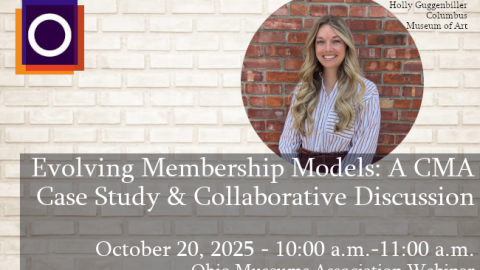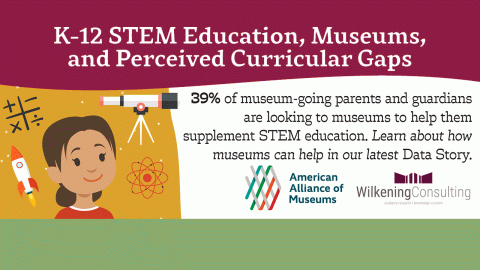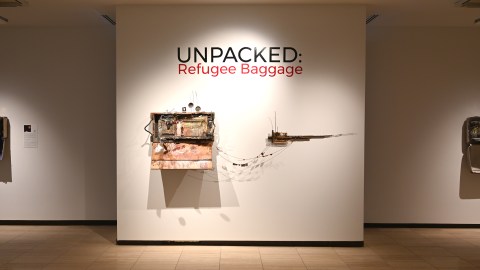
How current and emerging museum leaders can shift their mindset from fear to fierce.
This article originally appeared in Museum magazine’s September/October 2024 issue, a benefit of AAM membership.
Many of the cultural and nonprofit executives I coach these days tell me they are worried and even fearful about what the future holds. And not without reason.
These are anxiety-producing times. The terrain is uncertain, from the loss of COVID stimulus monies and private giving that hasn’t rebounded, to the backsliding on the need for and efficacy of diversity, equity, and inclusion initiatives, not to mention a host of other global crises, including climate change. All of this seems to be creating feelings of unease among those charged with leading nonprofit organizations.
It’s not surprising, then, that fewer people in the nonprofit sector are willing to take on leadership positions in these times. What happens to the museum field if leadership is calling, and no one answers?
Leaders operating from a place of fear are not on a sustainable track. But by asking themselves a series of powerful questions, leaders can exchange fear for the fierce, connected, and resilient leadership that museums need today.
What’s Going On?
Rather than being pulled toward leadership roles, my clients frequently are at a crossroads. They are considering stepping down or stepping away, or they simply do not want to shoulder the demands of a top job. They cite a host of reasons, including that museum directorships are too big for a single person, which is why some institutions have adopted shared leadership models. But when I probe deeper, I’ve found that the main reasons people don’t aspire to leadership roles boil down to fear and an understandable yearning for self-care.
When I became CEO of a cultural organization, I was achieving a long-awaited milestone in my career. After working my way up through the ranks in museums, serving as a museum consultant, and co-authoring a book on the leadership traits of highly successful leaders in the museum sector, I had knowledge, skills, and relationships aplenty. But I was not emotionally prepared to handle the breadth and crush of responsibilities, internal and external expectations, and the public exposure and scrutiny that are all part of the job.
And so, hard as it is to admit, I frequently led from a place of fear. My teams and I did well, but we failed to achieve our true potential because of that fear. Overcoming fear starts with naming it and recognizing its telltale signs. The current and could-be leaders I work with have shared with me the following fears.
Fear of failure. Top museum jobs are so big, and the challenges are many. There are numerous opportunities to drop the ball or miss the mark. This prompts overwork, perfectionism, procrastination, and vicious self-judgment.
Fear of exposure or embarrassment. One leader I coached said they were counting down the days until someone or some misstep “comes to take me out.” They wanted to develop an exit strategy before it was “too late.” We all have weaknesses, personal or professional, and in a world of heightened scrutiny, sensitivity, and social media, it’s easy to spend precious energy expecting the brick through the window.
Fear of uncertainty. We live and lead in a very uncertain world, which can feel like the brink of chaos. For many leaders, uncertainty triggers controlling behavior, which robs staff of agency and hampers empathy, curiosity, and creativity.
Fear of rejection. Many people struggle with feeling unworthy, inadequate, or unlovable. Putting ourselves “out there” opens us up to hearing all the reasons we don’t measure up. If we already have a strong internal critic’s voice, leadership roles can turn up the volume.
Fear of loneliness. The US Surgeon General has declared a loneliness epidemic, and Harvard Business Publishing found that 70 percent of new CEOs report feelings of loneliness. Leadership positions require long hours, travel, or relocation, all of which separate leaders from their families, friends, and communities.
Fear of vulnerability. Everything about leadership can leave us feeling vulnerable and exposed.
The Five Foundational Questions
Brené Brown’s groundbreaking research has shown that we cannot lead without overcoming shame about our shortcomings and fear of our vulnerabilities. “Choose the great adventure of being brave and afraid at the exact same time,” Brown advises. Vulnerability begets trust, and trust is the leader’s first currency.
One of the ways I coach people to “be brave and afraid at the exact same time” is to invite them into a practice of asking themselves powerful questions. By doing so, they learn how to coach themselves and others to avoid operating from a fearful place. Here are five foundational questions that can help accomplish that.
- What values make up my moral compass, and what is my North Star? When leaders are ethical, responsible, and compassionate, there is no risk of embarrassment or shame. Writing a clear statement of one’s life purpose and using it as the arbiter for all decisions and actions takes away fear and second-guessing.
- How do I nourish myself? When leaders deny their needs for physical and emotional sustenance, they put themselves and their organizations at risk. Nourishment might mean eating right and allowing yourself to sleep six to eight hours a night, or it might mean making time for the things that feed your soul and spirit, like making art, being in nature, or regularly meditating.
- What do I know that I am pretending not to know? Fear lurks in the shadows, and turning on the light of the innate wisdom, creativity, and resourcefulness that lies within each of us is the best way to banish it. Tune into and trust your intuition. Such insight comes in the moments of silence we create for ourselves.
- Where am I? The Conscious Leadership Group offers a simple straight line and the question “Where am I?” as a powerful tool for self-management. At all times leaders are either “above the line,” open, curious, and committed to learning, or “below the line,” closed, defensive, and committed to being right. (See above.) People below the line also tend to believe there is not enough money, time, space, energy, or love and that there is a present threat to their self-esteem, authority, or security, which leads to finding fault, blaming, rationalizing, justifying, avoiding, or causing conflict in the interest of winning. When a leader is above the line, they believe that the universe is working in their favor, they question their beliefs, and they are open to multiple perspectives. They believe that the people around them are creative, resourceful, and wise allies. Once we locate ourselves as operating above or below the line, we can take steps to move into or stay in conscious, fearless leadership.
- Looking back at the end of my life, what will have been important? Is it the task or the relationship? Is it my life’s product or its purpose? This “flash forward” technique allows us to consult with our older, wiser selves and reconnect to our sense of meaning and purpose in the moment, rather than when it is too late to change course.
These fearsome times need courageous museums to offer spaces for learning, dialogue, inspiration, reflection, and healing. Courageous museums need fierce, fearless leaders. Will you answer when leadership calls?
Resources
Brené Brown, Daring Greatly, 2012
Shirzad Chamine, Positive Intelligence: Why Only 20% of Teams and Individuals Achieve their Full Potential, 2012
Robert E. Quinn and Anjan V, Thakor, The Economics of Higher Purpose: Eight Counterintuitive Steps for Creating a Purpose-Driven Organization, 2019
The Conscious Leadership Group, “Locating Yourself – A Key to Conscious Leadership”
youtube.com/watch?v=fLqzYDZAqCI
Jim Dethmer, Diana Chapman, and Kaley Warner Klemp, “The 15 Commitments of Conscious Leadership”
whatgotyouthere.com/15-commitments-of-conscious-leadership-by-jim-dethmer
Building Movement Project, The Push and Pull: Declining Interest in Nonprofit Leadership, Race to Lead Research Series
buildingmovement.org/reports/push-and-pull-report/







